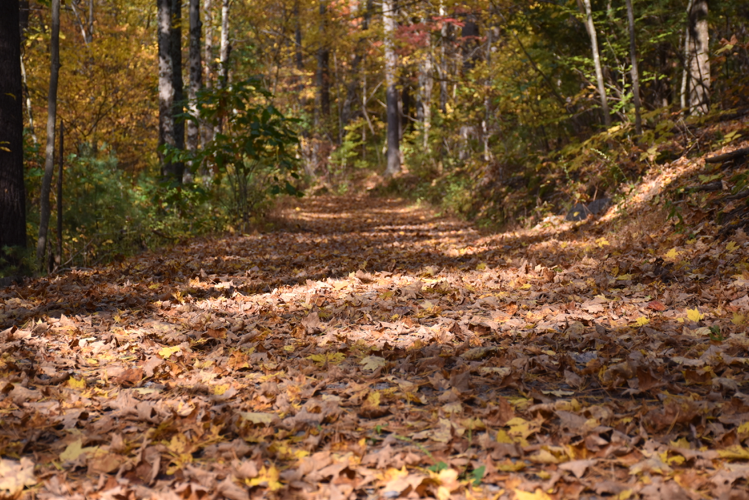Autumn is the time of Pennsylvania’s greatest watercolor. A whirlwind of colors sweep the landscape for a brief amount of time before the landscape takes a great plunge into winter. It is the last breath and a splendid farewell for all of the insects and many animal friends until we meet them again in the next year. It is also the time of preparation as animals collect resources for the winter months and the leaves of deciduous trees fall to the ground, putting nutrients into the soil for the coming years.

The actual process of the changing leaves is really amazing, as is a plant’s method of producing food. A combination of carbon dioxide, water, and sunlight allow a plant to go through something called “photosynthesis,” which allows them to produce sugar. Leaves are very sensitive to the amount of sunlight they receive in a day, so as daylight lessens closer to the winter season, the leaves are affected and stop producing sugars. Sunlight is captured in the leaves through a pigment called chlorophyll, which is responsible for the green coloration. Chlorophyll is being constantly replaced in leaves throughout the seasons of leaf-out (when there are leaves on deciduous trees). If it weren’t replaced constantly, the color of the leaves would fade, similar to the fading of a piece of construction paper left out in the sunshine.

During autumn, the connection between the leaves and the plants starts to become cut off, preventing replacement of chlorophyll in the leaves. The green chlorophyll coloration is the dominant color in the plants throughout the summer and as it begins to disappear, other colors (oranges and yellows) that are less dominant begin to become visible. Some colors seen during autumn are oranges (produced by carotenoids), yellows (produced by xanthophylls), and reds and purples (produced by anthocyanins). Out of the pigments listed, anthocyanins are not present during the growing season, as they are synthesized using sugars left behind in the leaf after the connection has been cut off between the leaf and the branch.

Finally, after being exposed to light and cold for an extended period of time, the other pigments break down in the leaves and the color that is left behind is brown, caused by tannins.

Leaf color changing is dependent on species, temperature, moisture, and light, so the time of the great splendor of colors varies from year to year. Enjoy the brilliance of the leaves when you can, as they will not be around for much longer!
There are so many incredible things to be seen during the autumn months. Get out and explore!
